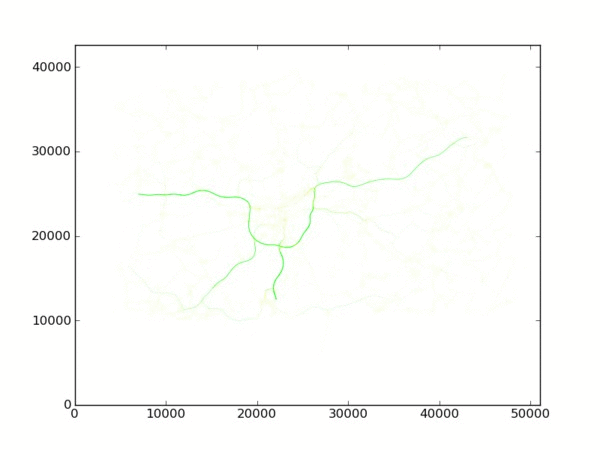Traces generation
Motivation
Realistic vehicular traces are necessary to conduct robust research on vehicular ad hoc network.
Unfortunately, there are no real-world traces detailed enough to evaluate VANET-based algorithms. Thus, the artificial vehicular traces need to be generated.
Challenges
Traffic cannot be easily modelled with analytical models, because it is complex and multi-dimensional. The generation of vehicular traces has to represent all levels of vehicular mobility. We propose to use following methodology [paper]:
- Microscopic mobility – behaviour of an individual car: a maximum speed, aggressiveness in driving manoeuvres, interaction with other vehicles – following, overtaking, possibility of causing collisions or breaking down
- Interaction with the environment – movement restricted to the specific road network (e.g. speed limits, traffic regulations, traffic lights)
- Macroscopic mobility – flows of cars from origin to destination expose specific traffic behavior dependent on place and time (e.g. traffic is congested during rush hours in city centre)
Solution
Our approach reconstructs all mentioned aspects of traffic mobility [paper]:
- Microscopic mobility – we use an advanced traffic simulator SUMO that enables to reproduce individual drivers behaviour and car’s specifics
- Interaction with the environment – we import a real-world map from OpenStreetMap containing detailed information about road network: speed limits, number of lanes, traffic light, etc.
- Macroscopic mobility – we use a mobility generator VehiLux that extracts metadata from the map and determines origins, destinations and number of trips. In addition we define paths between origin-destination points using dynamic route assignment [read more about VehiLux].
More info on Realistic vehicular traces generation.
The animated traffic in Luxembourg for 10 hours of the simulation:
